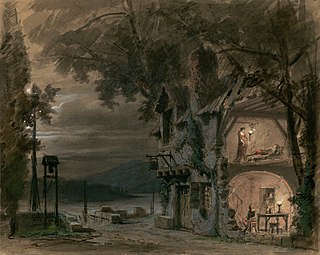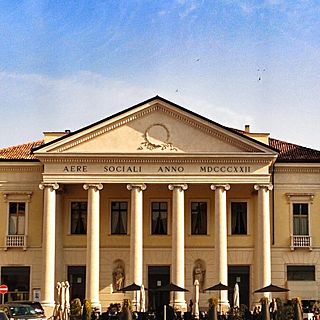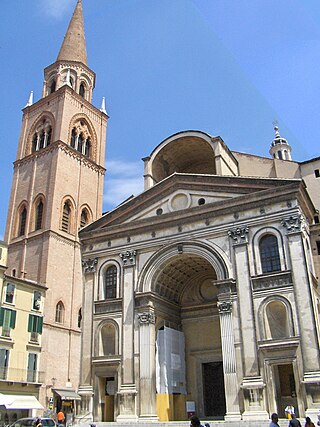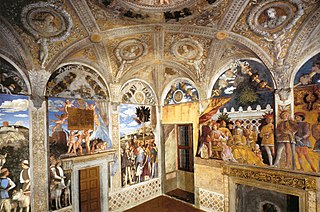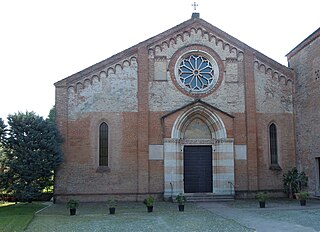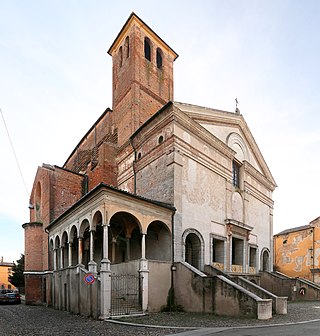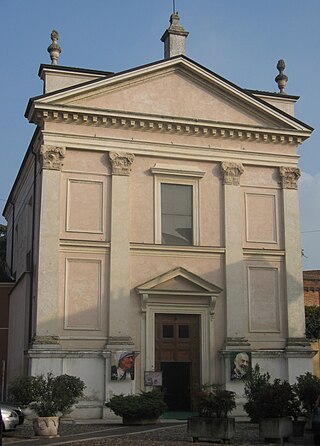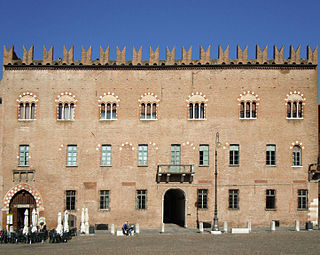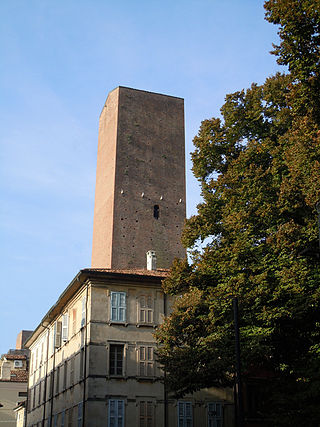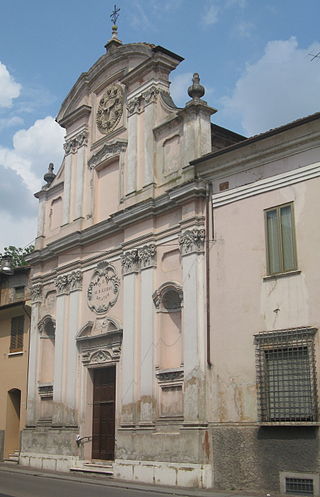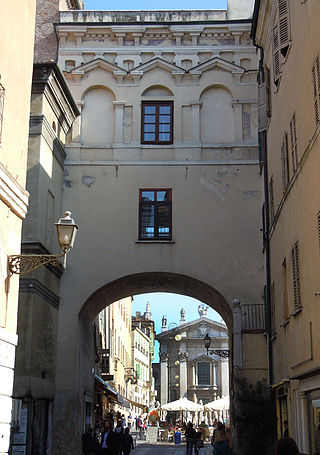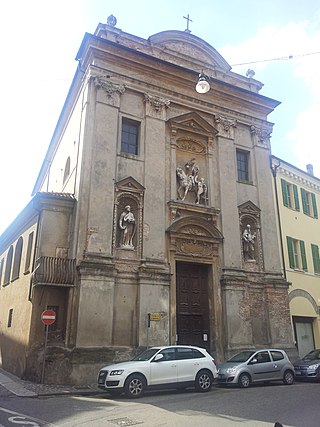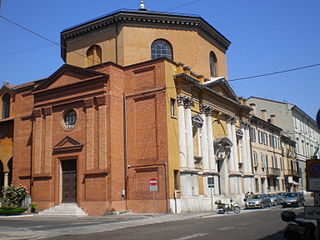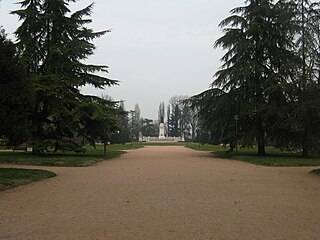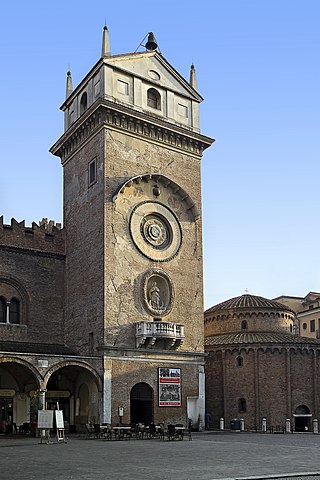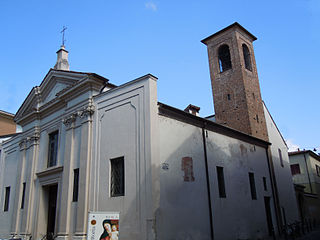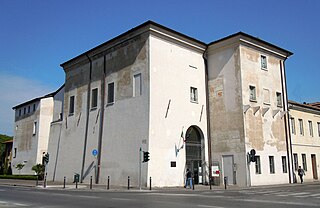19 Sights in Mantua, Italy (with Map and Images)
Legend
Welcome to your journey through the most beautiful sights in Mantua, Italy! Whether you want to discover the city's historical treasures or experience its modern highlights, you'll find everything your heart desires here. Be inspired by our selection and plan your unforgettable adventure in Mantua. Dive into the diversity of this fascinating city and discover everything it has to offer.
Sightseeing Tours in MantuaActivities in Mantua1. Casa di Rigoletto
Rigoletto is an opera in three acts by Giuseppe Verdi. The Italian libretto was written by Francesco Maria Piave based on the 1832 play Le roi s'amuse by Victor Hugo. Despite serious initial problems with the Austrian censors who had control over northern Italian theatres at the time, the opera had a triumphant premiere at La Fenice in Venice on 11 March 1851.
2. Teatro Sociale
The Teatro Sociale di Mantova is the largest historical theater located in the Municipality of Mantua; A traditional theatre, it is located in the historic centre of the city and is owned by the Società dei Palchettisti. It was built, between 1817 and 1822, by the well-known Ticino architect Luigi Canonica.
3. Basilica of Sant'Andrea
The Basilica of Sant'Andrea is a Roman Catholic co-cathedral and minor basilica in Mantua, Lombardy (Italy). It is one of the major works of 15th-century Renaissance architecture in Northern Italy. Commissioned by Ludovico III Gonzaga, the church was begun in 1472 according to designs by Leon Battista Alberti on a site occupied by a Benedictine monastery, of which the bell tower (1414) remains. The building, however, was only finished 328 years later. Though later changes and expansions altered Alberti's design, the church is still considered to be one of Alberti's most complete works. It looms over the Piazza Mantegna.
4. Camera degli Sposi
The Camera degli Sposi, sometimes known as the Camera picta, is a room frescoed with illusionistic paintings by Andrea Mantegna in the Ducal Palace, Mantua, Italy. During the fifteenth century when the Camera degli Sposi was painted, Mantua was ruled by the Gonzaga, who maintained Mantua's political autonomy from its much stronger neighbors Milan and Venice by bidding their support out as a mercenary state. By commissioning Mantegna to paint the chamber, Ludovico III Gonzaga, the Marquis of Mantua, sought to give the Gonzaga rule more cultural credibility at a time when other Northern Italian courts such as the Ferrara were commissioning their own “painted chambers”.
5. Chiesa di Santa Maria del Gradaro
The church of Santa Maria del Gradaro was built in Mantua starting from the year 1256 with the addition of the convent in 1260. The term Gradaro can be traced back to the Latin word cretarium which would describe the particular characteristic of the land where the original place of worship was built.
6. Chiesa di San Sebastiano
San Sebastiano is an Early Renaissance church in Mantua, northern Italy. Begun in 1460 according to the designs of Leon Battista Alberti, it was left partially completed in the mid-1470s, by which time construction had slowed and was no longer being directed by Alberti. As a consequence, little remains of Alberti’s work apart from the plan, which is considered one of the earliest and most significant examples of Renassiances centrally-planned churches. The plan is in the shape of a Greek cross, with three identical arms centering apses, under a central cross-vaulted space without any interior partitions. The church sits on a ground-level crypt which was intended to serve as a mausoleum for the Gonzaga family.
7. Chiesa di San Leonardo
The church of San Leonardo Abate is one of the oldest churches in the city of Mantua. It overlooks the square of the same name within the ancient district of Corno, so called because of the shape it took when grafted into Lake Mezzo; The current name of the district is derived from the church itself.
8. Palazzo d'Arco
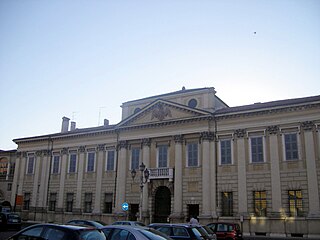
The Palazzo D'Arco is a Neoclassical-style palace located on Piazza Carlo D'Arco #4 in Mantua, region of Lombardy, Italy. The palace houses the Museo di Palazzo d'Arco, which displays the furnishings and artwork collected by the Duke D'Arco.
9. Palazzo Castiglioni
The Palazzo Bonacolsi, also known as Palazzo Castiglioni, is a 13th-century Gothic-style aristocratic palace located in the center of the town in Piazza Sordello in front of the Ducal Palace in Mantua, region of Lombardy, Italy.
10. Torre degli Zuccaro
The Zuccaro tower is a medieval building that stands in Via Tazzoli 10 in Mantua in the immediate vicinity of the Gonzaga Ducal Citadel and the historically main square of the city, Piazza Sordello. By the local population it is known dialectally as "Tor dal Sücar", sugar tower, a custom probably originated from the linguistic deformation of the name of the family that owned it in the sixteenth century. The Mantuan historian Davari also believed that the name derives from the use of the tower, until 1769, as a salt warehouse, a mineral that in the local dialect was called sücar brüsc, sugar with a sour taste.
11. Chiesa di Sant'Egidio
The Church of Sant'Egidio is located in the historic center of Mantua on Via Pietro Frattini. A church was located on the site likely by the 9th century, but is documented from the year 1151 in a bull by Pope Eugenius III. In 1540, the chapel of the Valenti was built, commissioned by the last will of Valente Valenti, courtier in the Gonzaga Duchy. Beginning in 1721, the church underwent a major reconstruction, and the present facade dates to that time. In 1777, the cardinal Luigi Valenti reconstructed the family chapel.
12. Voltone di San Pietro
Voltone di San Pietro or Porta di San Pietro, until the end of the thirteenth century, was one of the three ancient gates that, inserted in the first city walls, closed the access to St. Peter's Square, the center of the civitas vetus of Mantua.
13. Chiesa di San Martino
The church of San Martino, dedicated to St Martin of Tours is a Baroque architecture, Roman Catholic church located on Via Pomponazzo in a quartiere once known as San Martino in Mantua, region of Lombardy, Italy.
14. Chiesa di Sant'Orsola
The Church of Sant'Orsola in Mantua, Italy, was designed and built in 1608 by Antonio Maria Viani, the architect of the ducal court of the House of Gonzaga. The church was commissioned by Margherita Gonzaga d'Este, the widow of Alfonso II d'Este. Margherita, while not a nun herself, as a widow came to live in an apartment in the Clarissan monastery that was once adjacent.
15. Parco Piazza Virgiliana
The Piazza Virgiliana is an oblong shaped park in the center of Mantua, region of Lombardy Italy. It spans from a circumvailling Piazza Virgilliana street, fed from Piazza dei Filipinni by Via Virgilio, and stretching northwest towards Lago di Mezzo, from which it is separated by a wall and a span of the busy SS62 highway. The park has a number of tree-lined trails, and commemorative statues, most prominent of which is a monument to Virgil with flanking fountains.
16. Museo archeologico nazionale di Mantova
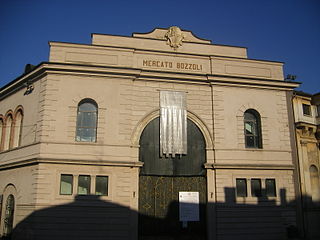
The National Archaeological Museum of Mantua is an archaeological museum located in Mantua, Italy. It is located at the Palazzo Ducale and holds objects discovered from excavations in the surrounding territory. The museum is operated by the Ministry for Cultural Heritage and Activities of Italy.
Wikipedia: National Archaeological Museum of Mantua (EN), Website
17. Torre dell'Orologio
The Torre dell'Orologio is a 15th-century renaissance tower on the Piazza delle Erbe in Mantua, Italy. It is attached to the Palazzo della Ragione, and next to the Rotonda di San Lorenzo. It houses an astronomical clock.
18. Santi Simone e Giuda
Santi Simone e Giuda is a Renaissance architecture, Roman Catholic church located in Mantua, region of Lombardy, Italy. The church rises near the Palazzo d'Arco and the Church of the Fillipines in Mantua.
19. Palazzo San Sebastiano - Museo della Città
The MACA - Mantua Ancient Collections is a museum in Mantua located in the sixteenth-century Palazzo San Sebastiano owned by the municipality. The museum was inaugurated on March 19, 2005 and from February 17, 2023 it took on its current name.
Wikipedia: Museo della città di Palazzo di San Sebastiano (IT), Website, Fixme
Share
How likely are you to recommend us?
Disclaimer Please be aware of your surroundings and do not enter private property. We are not liable for any damages that occur during the tours.
